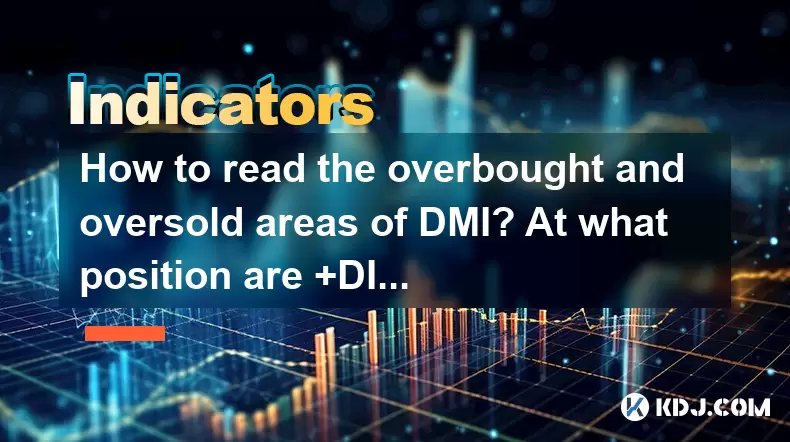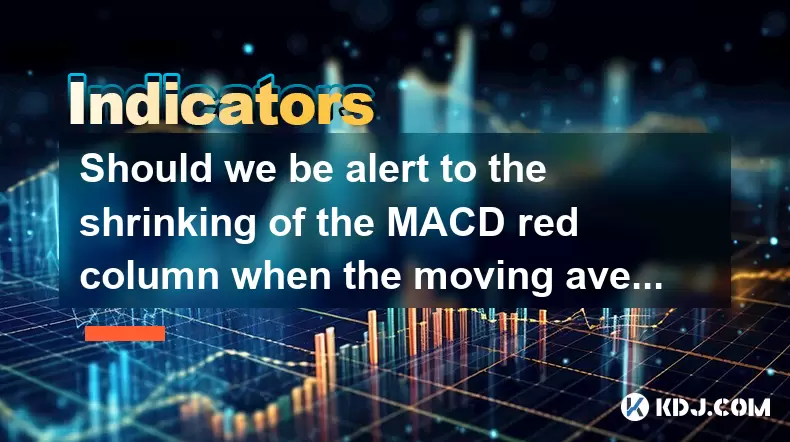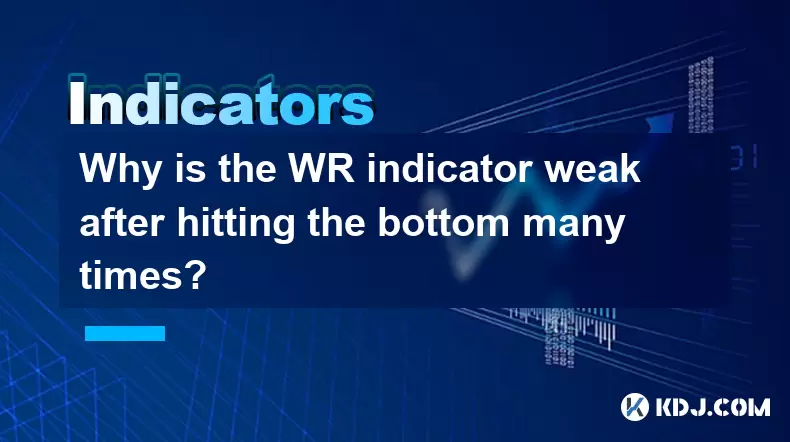-
 Bitcoin
Bitcoin $101,898.5005
-0.75% -
 Ethereum
Ethereum $2,258.1125
-1.07% -
 Tether USDt
Tether USDt $1.0004
0.01% -
 XRP
XRP $2.0178
-2.93% -
 BNB
BNB $624.0243
-1.53% -
 Solana
Solana $134.3298
-0.90% -
 USDC
USDC $0.9999
0.01% -
 TRON
TRON $0.2675
-2.05% -
 Dogecoin
Dogecoin $0.1538
-1.96% -
 Cardano
Cardano $0.5482
-1.11% -
 Hyperliquid
Hyperliquid $35.5636
5.45% -
 Bitcoin Cash
Bitcoin Cash $453.4902
-1.66% -
 Sui
Sui $2.5134
-2.97% -
 UNUS SED LEO
UNUS SED LEO $9.1292
1.77% -
 Chainlink
Chainlink $11.8457
-1.60% -
 Stellar
Stellar $0.2312
-2.73% -
 Avalanche
Avalanche $16.9721
0.29% -
 Toncoin
Toncoin $2.7549
-3.82% -
 Shiba Inu
Shiba Inu $0.0...01081
-1.10% -
 Litecoin
Litecoin $80.8250
-0.71% -
 Hedera
Hedera $0.1374
0.21% -
 Monero
Monero $305.4827
-2.36% -
 Ethena USDe
Ethena USDe $1.0006
0.00% -
 Dai
Dai $1.0000
-0.01% -
 Polkadot
Polkadot $3.2085
-3.12% -
 Bitget Token
Bitget Token $4.0845
-3.13% -
 Uniswap
Uniswap $6.3353
-1.63% -
 Pi
Pi $0.5085
-0.70% -
 Pepe
Pepe $0.0...08913
-3.82% -
 Aave
Aave $232.7090
-0.58%
How to read the overbought and oversold areas of DMI? At what position are +DI and -DI considered overbought?
DMI helps traders spot trend strength and overbought/oversold conditions using +DI, -DI, and ADX lines; combine with RSI for better insights.
May 23, 2025 at 11:21 am

The Directional Movement Index (DMI) is a technical indicator that helps traders identify the strength of a trend and potential overbought or oversold conditions in the market. The DMI consists of three lines: the Positive Directional Indicator (+DI), the Negative Directional Indicator (-DI), and the Average Directional Index (ADX). Understanding how to read the overbought and oversold areas of the DMI can provide valuable insights for making informed trading decisions.
Understanding the Components of DMI
The DMI is composed of three main components:
- +DI (Positive Directional Indicator): This line measures the upward movement in the price.
- -DI (Negative Directional Indicator): This line measures the downward movement in the price.
- ADX (Average Directional Index): This line measures the strength of the trend, regardless of its direction.
The +DI and -DI lines are used to determine the direction of the trend, while the ADX helps gauge the strength of that trend.
Identifying Overbought and Oversold Conditions
Overbought and oversold conditions in the context of the DMI are typically identified by the relationship between the +DI and -DI lines. When the +DI line is significantly higher than the -DI line, it suggests that the market is overbought. Conversely, when the -DI line is significantly higher than the +DI line, it suggests that the market is oversold.
At What Position Are +DI and -DI Considered Overbought?
The specific positions at which +DI and -DI are considered overbought can vary depending on the time frame and the specific market being analyzed. However, a common rule of thumb is:
- +DI is considered overbought when it is above 25 and significantly higher than -DI. This indicates strong upward momentum and potential overbought conditions.
- -DI is considered oversold when it is above 25 and significantly higher than +DI. This indicates strong downward momentum and potential oversold conditions.
Using ADX to Confirm Overbought and Oversold Conditions
The ADX line plays a crucial role in confirming overbought and oversold conditions identified by the +DI and -DI lines. The ADX measures the strength of the trend, and a high ADX value indicates a strong trend, while a low ADX value indicates a weak trend.
- An ADX value above 25 suggests a strong trend, which can confirm overbought or oversold conditions indicated by the +DI and -DI lines.
- An ADX value below 20 suggests a weak trend, which may indicate that overbought or oversold conditions are less reliable.
Practical Steps to Read DMI for Overbought and Oversold Conditions
To effectively read the DMI for overbought and oversold conditions, follow these steps:
- Add the DMI indicator to your trading chart. This can usually be done through the indicators menu of your trading platform.
- Observe the +DI and -DI lines. Look for instances where the +DI is significantly higher than the -DI, indicating overbought conditions, or where the -DI is significantly higher than the +DI, indicating oversold conditions.
- Check the ADX line. If the ADX is above 25, it confirms a strong trend, making the overbought or oversold signals more reliable.
- Monitor the +DI and -DI levels. Pay particular attention when +DI or -DI crosses above 25 and is significantly higher than its counterpart.
Example of Reading DMI for Overbought Conditions
Let's consider an example to illustrate how to read the DMI for overbought conditions:
- The +DI line is at 30 and the -DI line is at 15. This indicates that the +DI is significantly higher than the -DI, suggesting overbought conditions.
- The ADX line is at 28. This confirms a strong trend, making the overbought signal more reliable.
In this scenario, the trader should be cautious about entering new long positions and may consider taking profits on existing long positions.
Example of Reading DMI for Oversold Conditions
Now, let's consider an example for oversold conditions:
- The -DI line is at 30 and the +DI line is at 15. This indicates that the -DI is significantly higher than the +DI, suggesting oversold conditions.
- The ADX line is at 27. This confirms a strong trend, making the oversold signal more reliable.
In this scenario, the trader should be cautious about entering new short positions and may consider taking profits on existing short positions.
Combining DMI with Other Indicators
Combining the DMI with other technical indicators can enhance its effectiveness in identifying overbought and oversold conditions. Some popular indicators to use in conjunction with the DMI include:
- Relative Strength Index (RSI): The RSI can help confirm overbought or oversold conditions identified by the DMI.
- Moving Averages: Moving averages can help identify the overall trend direction and provide additional confirmation of overbought or oversold conditions.
- Bollinger Bands: Bollinger Bands can help identify potential reversal points when combined with the DMI.
Frequently Asked Questions
Q1: Can the DMI be used effectively in all market conditions?
The effectiveness of the DMI can vary depending on the market conditions. In trending markets, the DMI can be highly effective in identifying overbought and oversold conditions. However, in range-bound or choppy markets, the DMI may produce false signals, and traders should use additional indicators to confirm the DMI readings.
Q2: How often should I check the DMI for overbought and oversold conditions?
The frequency of checking the DMI depends on your trading style and time frame. For short-term traders, checking the DMI multiple times a day may be necessary. For longer-term traders, checking the DMI on a daily or weekly basis may be sufficient.
Q3: Can the DMI be used for cryptocurrencies other than Bitcoin?
Yes, the DMI can be used for any cryptocurrency. The principles of identifying overbought and oversold conditions remain the same across different cryptocurrencies. However, traders should be aware that different cryptocurrencies may exhibit different volatility levels, which can affect the reliability of the DMI signals.
Q4: Are there any specific settings for the DMI that work best for cryptocurrency trading?
The default settings for the DMI (usually a 14-period setting) are generally effective for cryptocurrency trading. However, traders may experiment with different period settings to find what works best for their specific trading strategy and the cryptocurrency they are trading.
Disclaimer:info@kdj.com
The information provided is not trading advice. kdj.com does not assume any responsibility for any investments made based on the information provided in this article. Cryptocurrencies are highly volatile and it is highly recommended that you invest with caution after thorough research!
If you believe that the content used on this website infringes your copyright, please contact us immediately (info@kdj.com) and we will delete it promptly.
- DOGE Recovery Amid US-Iran Tensions: A Market Rollercoaster
- 2025-06-23 20:45:13
- Fiserv, PayPal, and Stablecoins: A New Era of Interoperability?
- 2025-06-23 20:45:13
- Hacken Token's Wild Ride: Minting Exploit and the Cryptocurrency Crash
- 2025-06-23 21:05:12
- Dogecoin, Cloud Mining, and Blockchain: A Meme's Evolution
- 2025-06-23 21:25:12
- Layer 1 Turmoil: CEO Ousted Amidst Scam Allegations
- 2025-06-23 21:05:12
- Solana's Stumble: Price Crash and Network Exodus?
- 2025-06-23 21:25:12
Related knowledge

What is the significance of the gap formed by the gap opening not being filled within five days?
Jun 23,2025 at 09:42pm
Understanding Gaps in Cryptocurrency TradingIn the world of cryptocurrency trading, a gap refers to a situation where the price of an asset jumps from one level to another without any trading activity occurring between those two levels. This often happens over weekends or holidays when the market is closed, and significant news or events occur that impa...

Does the second golden cross of MACD above the zero axis represent the continuation of strength?
Jun 23,2025 at 08:21pm
Understanding the MACD IndicatorThe Moving Average Convergence Divergence (MACD) is a widely used technical analysis tool in cryptocurrency trading. It consists of three main components: the MACD line, the signal line, and the histogram. The MACD line is calculated by subtracting the 26-period Exponential Moving Average (EMA) from the 12-period EMA. The...

Is it effective when the DIF line suddenly crosses the zero axis when the volume is shrinking and the market is trading sideways?
Jun 23,2025 at 07:29pm
Understanding the DIF Line in Technical AnalysisThe DIF line, or the Difference Line, is a critical component of the MACD (Moving Average Convergence Divergence) indicator, widely used in technical analysis across cryptocurrency and traditional financial markets. It represents the difference between the 12-period EMA (Exponential Moving Average) and the...

Should we be alert to the shrinking of the MACD red column when the moving average is arranged in a bullish pattern?
Jun 23,2025 at 08:14pm
Understanding the MACD Red Column and Its SignificanceThe Moving Average Convergence Divergence (MACD) is a widely used technical indicator in cryptocurrency trading. It consists of three main components: the MACD line, the signal line, and the MACD histogram (the red column). The red column represents the difference between the MACD line and the signal...

Why is the WR indicator weak after hitting the bottom many times?
Jun 23,2025 at 07:56pm
Understanding the WR Indicator in Cryptocurrency TradingThe Williams %R (WR) indicator is a momentum oscillator used by traders to identify overbought and oversold levels in the market. It ranges from 0 to -100, with readings above -20 considered overbought and below -80 considered oversold. In the context of cryptocurrency trading, where volatility is ...

Is the shrinking cross star after the historical high a signal of topping?
Jun 23,2025 at 05:56pm
Understanding the Shrinking Cross Star PatternIn technical analysis, candlestick patterns are essential tools for traders to predict potential price movements. One such pattern is the shrinking cross star, which appears as a small-bodied candle with long upper and lower shadows, indicating indecision in the market. When this pattern forms after an asset...

What is the significance of the gap formed by the gap opening not being filled within five days?
Jun 23,2025 at 09:42pm
Understanding Gaps in Cryptocurrency TradingIn the world of cryptocurrency trading, a gap refers to a situation where the price of an asset jumps from one level to another without any trading activity occurring between those two levels. This often happens over weekends or holidays when the market is closed, and significant news or events occur that impa...

Does the second golden cross of MACD above the zero axis represent the continuation of strength?
Jun 23,2025 at 08:21pm
Understanding the MACD IndicatorThe Moving Average Convergence Divergence (MACD) is a widely used technical analysis tool in cryptocurrency trading. It consists of three main components: the MACD line, the signal line, and the histogram. The MACD line is calculated by subtracting the 26-period Exponential Moving Average (EMA) from the 12-period EMA. The...

Is it effective when the DIF line suddenly crosses the zero axis when the volume is shrinking and the market is trading sideways?
Jun 23,2025 at 07:29pm
Understanding the DIF Line in Technical AnalysisThe DIF line, or the Difference Line, is a critical component of the MACD (Moving Average Convergence Divergence) indicator, widely used in technical analysis across cryptocurrency and traditional financial markets. It represents the difference between the 12-period EMA (Exponential Moving Average) and the...

Should we be alert to the shrinking of the MACD red column when the moving average is arranged in a bullish pattern?
Jun 23,2025 at 08:14pm
Understanding the MACD Red Column and Its SignificanceThe Moving Average Convergence Divergence (MACD) is a widely used technical indicator in cryptocurrency trading. It consists of three main components: the MACD line, the signal line, and the MACD histogram (the red column). The red column represents the difference between the MACD line and the signal...

Why is the WR indicator weak after hitting the bottom many times?
Jun 23,2025 at 07:56pm
Understanding the WR Indicator in Cryptocurrency TradingThe Williams %R (WR) indicator is a momentum oscillator used by traders to identify overbought and oversold levels in the market. It ranges from 0 to -100, with readings above -20 considered overbought and below -80 considered oversold. In the context of cryptocurrency trading, where volatility is ...

Is the shrinking cross star after the historical high a signal of topping?
Jun 23,2025 at 05:56pm
Understanding the Shrinking Cross Star PatternIn technical analysis, candlestick patterns are essential tools for traders to predict potential price movements. One such pattern is the shrinking cross star, which appears as a small-bodied candle with long upper and lower shadows, indicating indecision in the market. When this pattern forms after an asset...
See all articles
























































































